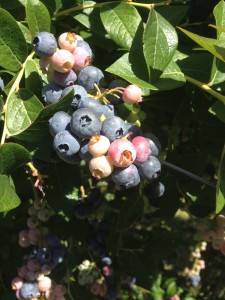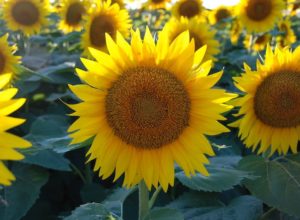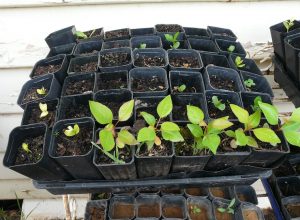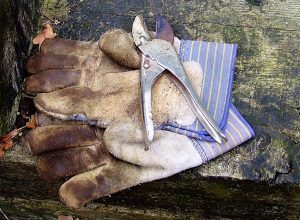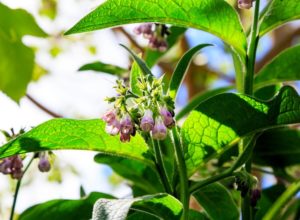January in the cool temperate garden
by Christina Giudice, of Food In My Backyard, Hobart
WHAT TO PLANT?
There are two main planting focuses for January in the cool temperate garden.
- Succession and replacement planting of your summer vegies, including:
- Carrots, beetroot, radish, turnip, lettuce (chill the seed in the fridge for a few days before planting, and plant on the shady side of sweet corn or climbing beans or sunflowers), Asian greens (eg rocket, mizuna, mibuna, mustard, cress), silver beet, spring onions, bush beans, and if you’re in a warm spot, seedlings of late zucchini, cucumber, small pumpkins like golden nugget, sweetcorn and even tomatoes. Yes, tomatoes!
- Early plantings of long season vegies that will grow into autumn and winter, including:
- Leeks, parsnips, celery, celeriac, brussel sprouts. Other brassicas too (like broccoli, cabbage, cauliflower) can be planted in seed trays to grow on as seedlings to be planted in the coming months. Brussel sprouts need the longest growing season of this tribe, so it’s a good idea to plant them as seedlings this month. Keeping potatoes like kennebecs can go in now too.
MAINTAINANCE
- Give your fruit trees (especially citrus) a deep watering and mulch well (if they’re not already) with compost, or mixed layers of animal manure and straw.
- As you pick the last of your gooseberries and other summer berries, consider giving them a summer prune to tidy up and trim back over-vigorous shoots. Nectarines and peaches can also be summer pruned as soon as you’ve finished picking. Any big pruning cuts will heal more quickly in warm weather, and decrease the risk of disease organisms attacking the tree.
- As you deal with post-holiday weeds, be happy that you now have lots of good compost fodder! Layer up weeds and spent plants (even chopped up monstrous zucchinis that got away) with animal manure (collect shopping bags on roadsides on the way back from the beach) and water well to create large compost heaps that will break down quickly in the warmer summer weather. A volume of at least a cubic metre will heat up well, as the heat generated by the compost micro-organisms doesn’t dissipate too quickly.
- Cut back artichokes as they finish flowering. You can carefully dig out the young suckers around the base of older plants to get more plants to give away or expand your patch. Give them all, old and new plants, a good feed and watering to get them going for the next phase of growth.
PESTS AND DISEASE
- Check for scale on your lemons and olives. They can be suffocated with a spray of white oil, or a home-made alternative: Find that bottle of canola oil in the back of the pantry and mix one part oil with 10 parts water in a spray bottle. Add just two drops of liquid detergent. Spray this thoroughly on the underside of leaves and branches of affected trees. Repeat after a week or two. Don’t spray white oil or the home made equivalent on a hot day (above 25o or you might fry the plant.
- Cherry slug may be creating skeletonised patches on the leaves of your pear, cherry and quince trees. These leech-like creatures are the larvae of the sawfly. You can find and squish on a small tree, or if the ‘eww’ factor is too high, target spray them with a product like Yates “Success” which is a biological control agent, or pyrethrum. But be very targeted, because pyrethrum will kill the good fellas as well as the bad fellas. For a larger tree you can throw fine lime or ash from the fireplace on the leaves to dry the little buggers out.
HARVEST AND PRESERVE
- Pick your tomatoes as soon as you see a change in colour at the blossom end. Bring them inside to ripen for best flavour. I put mine on a platter in the kitchen, not in direct sunlight, and then I can eat the little ones like lollies as they ripen! Never store your tomatoes in the fridge – it changes the flavour. For the worse.
- Berries and stone fruit are abundant this month. SUPER abundant. I’m still in the delighted stage of preserving. Bottled and dried apricots, nectarines and peaches, cherry and berry jams, vinegars and cordials, and batches quick frozen for more leisurely processing in the winter months. And we haven’t even started on the tomatoes, plums, apples, pears and quinces yet! That’s when the harassed stage of preserving begins!
PERMACULTURE PRINCIPLE NO 1: OBSERVE AND INTERACT
- Spend some time watching the bees as they go about their beautiful business. Notice which flowers they particularly love. My thyme bushes, of several varieties, are utter bee magnets at the moment. I’ll wait till they’ve finished flowering and take some cuttings to propagate more plants to put in nooks and crannies later in the year.
- Are ‘pests’ really pests? The nectarine trees had some curly leaf in spring, but are the fruit affected? Not on one of my trees, but yes on the other. Maybe I’ll replace that susceptible tree with something else this winter.
- The old compost heap that I half dug out to use has been sitting for a while, and around it has grown a crop of seedlings from gone-to-seed vegies thrown in there months ago. There are young lettuce, leeks, sunflowers and something else which I think might be cape gooseberry. These ‘free’ babies can all be carefully transplanted into new places so I can use the rest of the compost around artichokes and rhubarb plants for their summer feed.


